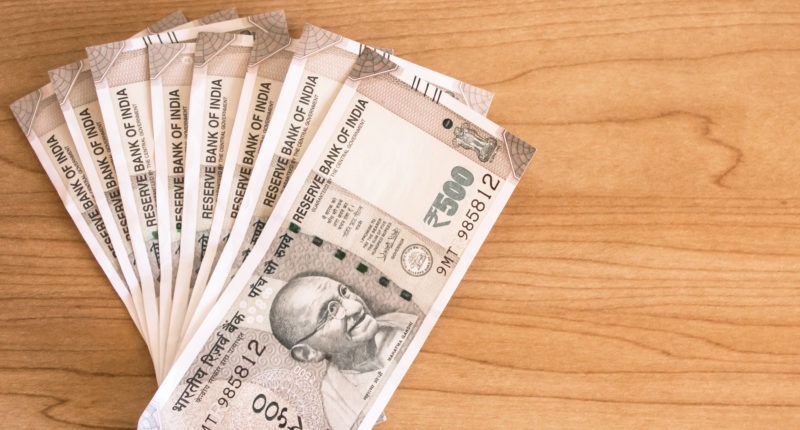The Indian Rupee has hit an all-time low of 77.47 against the US Dollar. India imports over 80% of its energy needs, and crude oil prices have crossed $100 per barrel. Foreign Portfolio Investors (FPIs) are exiting Indian stock markets because of concerns surrounding high domestic petrol, diesel, and LPG prices, leading to a spike in retail inflation. Moreover, the US Federal Reserve has raised interest rates in the US by 50 basis points (bps) in May to control the four-decade high inflation because of surging energy and food prices. RBI, too raised the repo rate by 40 bps in May, and more interest rate hikes will follow. As FPIs exit the Indian equity markets and investors worldwide rush to the safety of the US Dollar, it has led to the strengthening of the US Dollar and massive depreciation of the Indian Rupee. How does the Rupee hitting an all-time low against the US Dollar impact you?
Foreign Education and Travel will get costly:
If Indian students go to study in the US, they incur expenses in US Dollars. For instance, college tuition fees, living expenses etc., will be in US Dollars. When the Rupee depreciates against the US Dollar, the rupees you need to pay in dollars are more.
Suppose you join a college in the US that charges tuition fees of $10,000. If 1 US Dollar equals Rs 70, you incur Rs 7 Lakh on college tuition fees. However, if the Rupee depreciates to Rs 77 against the US Dollar, you will incur Rs 7.7 Lakh, a higher expense.
Similarly, you will incur higher costs on foreign travel as you spend in dollars. For instance, you may have to postpone a US holiday or a European tour to avoid bearing higher costs.
Luxury cars and car components get costlier.
You will have to shell out more money for your dream car post the rupee depreciation against the US Dollar. For instance, if an Indian car manufacturer is importing car components from the US, it makes payments in US Dollars.
Ultimately, the car manufacturer will raise car prices and pass higher costs to the customers.
Imports to get dearer
India is one of the largest crude oil importers in the world. As India pays for crude oil imports in US Dollars, a depreciation in the Rupee against the US Dollar will make crude oil imports costlier. Moreover, the US dollar will further strengthen against the Indian Rupee as its demand rises because countries pay for crude oil imports in US Dollars.
India’s current account deficit will widen, resulting in further depreciation of the Indian Rupee against the US Dollar. It means a country is importing more goods and services than it exports. Ultimately, inflation will rise in the Economy as consumers bear the brunt of higher fuel prices.
Moreover, Indian companies import mechanical devices, electrical machinery, precious stones, automobile components, semiconductors, etc. and pay for them in US Dollars. Companies will pass on higher costs to customers, which will make their products costlier, fueling higher inflation in the Economy.
Expect higher Loan Rates.
As the Rupee depreciates against the US Dollar, imports will get costlier, indirectly impacting loan rates. For instance, RBI will have to hike the repo rate regularly to bring rampaging inflation under control.
It leads to banks increasing lending rates, and subsequently, you incur higher EMIs on car loans, personal loans, home loans, etc.
Equity markets will correct.
Many people avail loans to purchase houses, cars, two-wheelers, etc. As RBI may go for more repo rate hikes, loans will be more expensive.
People will postpone consumption, car and house purchases, etc., which will impact the automobile sector, infrastructure and housing, and the banking sector in India. It will lead to a decline in the stock market as significant sectors face lower demand for their products.
Foreign Institutional Investors (FIIs) have steadily exited Indian Equity Markets in 2022. For instance, FPIs pulled out a massive Rs 41,000 crore from Indian equity markets in March 2022, fearing the impact of higher crude oil prices on the Indian Economy. If the Rupee continues to decline against the US Dollar, FPIs who are significant participants will exit the Indian stock market, impacting your stocks and equity mutual fund investments.
The deprecation of the Rupee against the US Dollar will increase the return on fixed-income investments. For instance, banks will hike Fixed Deposit rates, and the government will increase small savings schemes rates such as PPF, NSC, etc., which is good news for investors. The Rupee depreciation against the US Dollar helps exporters who receive payment for their products in US Dollars. As India imports vast quantities of crude oil, gold, electronic and electrical equipment, etc., the Rupee’s depreciation against the US Dollar will push up inflation in the economy.
For any clarifications/feedback on the topic, please contact the writer at cleyon.dsouza@cleartax.in

I write to make complicated financial topics, simple. Writing is my passion and I believe if you find the right words, it’s simple.





